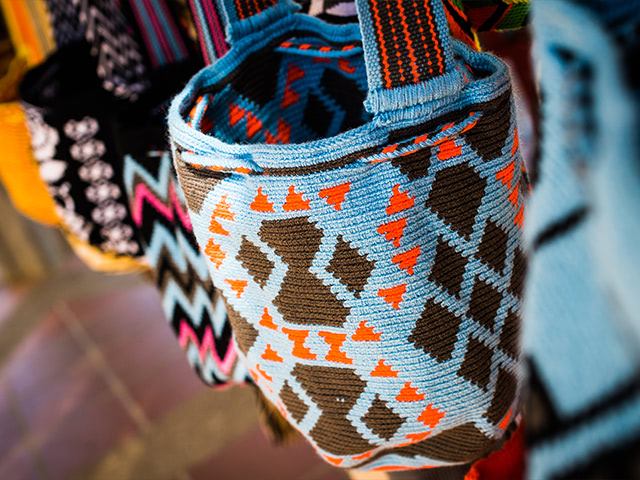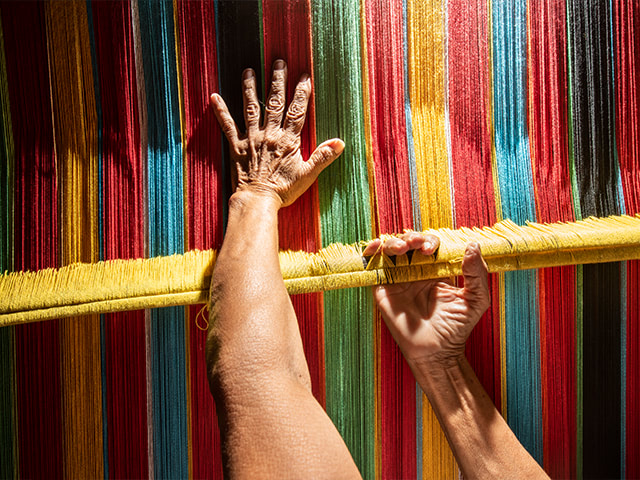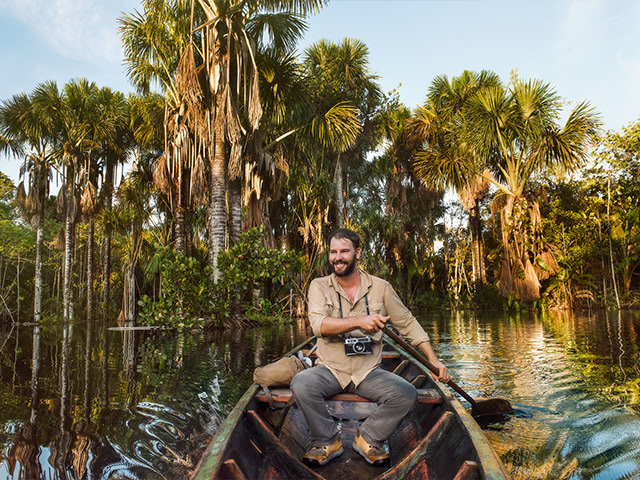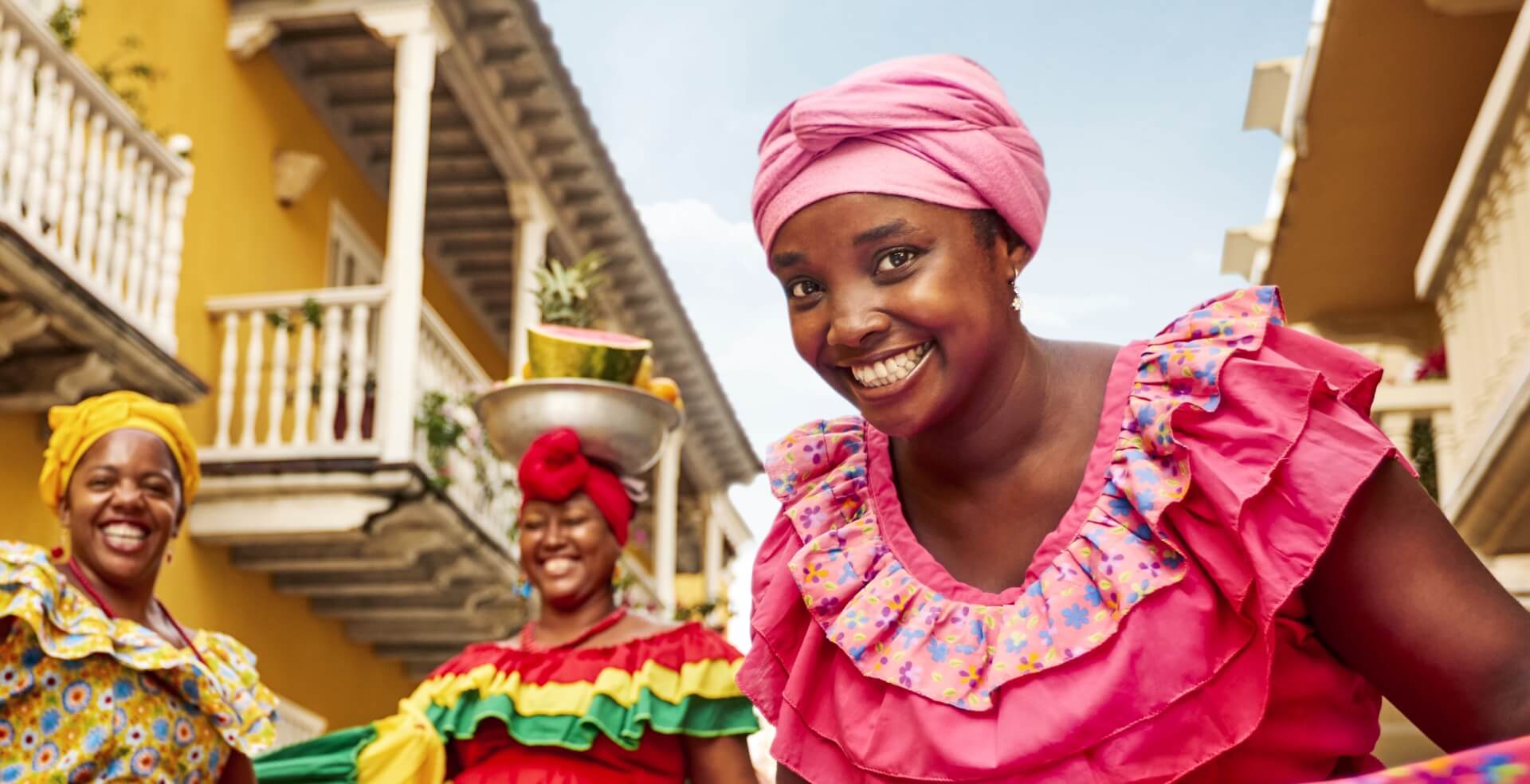The story of artesanias colombianas is one of wisdom and knowledge. Follow our lead and visit diverse parts of the country in search of color, skill and talent.
Discover different types of Colombian handicrafts
Every good story has a rich and interesting past. Let’s transport ourselves and take a ‘Colombian handicrafts tour’ to discover the various types of Colombian skill and artistry.
First we can visualize three different types of artist, each excelling at their art. The first are Colombia’s many and diverse indigenous groups, who see their art as a means to express their culture and beliefs, fusing their artistic merit with functional practicality.
The second are Colombia’s traditional folk artists, who come from its mestizo and Black communities and have transmitted their knowledge from generation to generation. These artesans are blessed with the gift of inspiring and charming with their art.
Finally there are Colombia’s contemporary or neo-artisans, who fuse cutting-edge technology with ancient skills to create surprising and beautiful designs.
All of these come together to express the spirit and charm of the world’s most welcoming country. Let’s showcase its wonders on a tour of Colombian handicrafts.
Our journey begins in the north: from the Wayuu ‘mochila’ bags to Mompox filigree

It’s seven o’clock in the morning and the first flight from Bogota lands at Riohacha airport, capital of La Guajira. The sun glints on the turquoise sea and reflects a city that mixes modern architecture with its colonial past. We’ll begin our journey through Colombian handicrafts here.
The heat of the Greater Colombian Caribbean is our companion as we meet the inhabitants of this small but bustling city. The Wayuu indigenous people, who enshrine their worldview in mythical representations, design their handicrafts to allude to the way they see the world.
You may also be interested in: Wayúu settlements
Charming is the only way to describe the majesty of the traditional Wayuu handicrafts. One standout feature of this group is the skill behind its Kanas weaving technique, an ancient form that uses geometric shapes to evoke the natural world.
Visit the region and you will be able to watch the great Wayuu weavers in action. See for yourself how bags, hammocks and other unique goods materialize from the fingertips of these talented artisans.
You can also visit Wayuu reservations and learn about the way of life of these communities, including how dance and traditional cuisines are part of their celebrations.

The best time to embark on this adventure is in May, the month in which the Wayuu cultural festival is celebrated in Uribia.
Mompox: Complex crafts in a swirl of yellow butterflies
Step into Mompox and you’ll feel you’re stepping onto the set of a period film, such is the way this town has remained intact throughout the centuries. Set out from the cities of Cartagena or Valledupar and follow the sun until you reach this charming town.
The moment you arrive, you’ll see how the region’s natural treasures, such as its famous clouds of yellow butterflies, are immortalized in Mompox filigree, a complicated and intricate form of metalwork in silver and gold.
The treasures of Mompox handicrafts
Strands of gold and silver, entwined into jewelery made with such delicacy that it is as if the Mompox artisans have tweezers instead of fingers.
The magic of Momposina filigree is the way in which these precious metals are transformed into rings, earrings, bracelets and necklaces and, of course, the tiny fish that any reader of Colombian literature will recognize.
To discover the culture and history behind this famous filigree, wander to Real del Medio street and explore Mompox’s historic center, a stunning backdrop you can wander and photograph without tiring.
Guests are welcome, too, to visit the gold and silversmith’s workshops and see the town’s artisans at work, admiring the handiwork of artists who have dedicated their lives to continuing this tradition and creating treasured pieces of art.
Walking into the center of Colombia: Ceramics from Raquira
The heart of Colombia is spread throughout its biodiverse territory and the warmth of its people never falters. The center of the country is, however, home to a unique and colorful culture with an enticing creative output.
Three hours from Bogota, visitors will find Villa de Leyva, a small town with a timeless charm that’s the perfect stop on the way to the ‘ceramic capital’ of Ráquira.
You may also be interested in: What to do in Villa de Leyva?
Raquira is home to colorful streets and craftsmen and women who express their talent and skill through clay – creating replicas of the iconic ‘chiva’ buses, as well as piggy banks, and animals large or small that bring interiors and outdoor spaces to life.
These are potters who continue the region’s ancient Muisca traditions.
Turn left: Colombian handicrafts in the west of country
In the next part of our tour you will travel out to the department of Antioquia and onto Medellin, its capital, where you can immerse yourself in street art and music.
From here you’ll take a journey on the road, past a stone the size of a mountain in the middle of a lake, and onto a town where talent and skill are evident in its vibrant crockery.
In Carmen de Viboral, tableware is not just there for the serving of food, it’s a statement in itself - an expression of color, culture and joy.
Painted jugs, serving trays, vases, plates, dishes and bowls catch the eye, all the product of tireless inventiveness and imagination at the hands of hundreds of artisans.
Once more there is an opportunity here to visit the production workshops and browse new and exciting statement crockery infused with the stories and traditions of this culture. Try following the traditional Paseo del Angel tour, which is one of the best ways to admire the full range of the town’s ceramics.
The ancestral Amazon and the charm of Colombian handicrafts

See it from the sky and you’ll be astounded by the sheer depth and breadth of this carpet of green. It could be an ocean of trees. In fact, it’s the Amazon rainforest, a destination that evokes romance, adventure, magic, mystery, wilderness and charm.
Our tour is focused on crafts, but it’s impossible not to be astounded by the splendor of nature here, with exotic animals, trees the height of buildings and a world famous river that continues to retain its secrets.
Now, though, let’s focus on its people: ancient indigenous communities seeped in knowledge, wisdom and artistry. There is no better place to end your tour of Colombian handicrafts.
The dream-like splendor of the Amazon
Santander Park is the Leticia's central square and every evening its inhabitants gather to wait for some very special guests who arrive on cue from the sky.
Hundreds of macaw parrots fly in to spend the night in the square’s trees, creating a fantasy backdrop for its human visitors and the ideal soundtrack for the final leg of our tour.
The crafts in this part of Colombia are intimately related to its surroundings and an understanding of the Amazon’s ecosystems are key to understanding the art of the Huitoto and Ticuna ethnic groups. These groups use natural elements, such as fibers, bark and vegetable dyes, to create ceramic vessels and wooden sculptures.
The culture, stories and enjoyment behind Colombian handicrafts are clearly endless. Every region showcases its talent, skill and pride, each expressed in a different way. Which of these unique and intricate examples of artisanry would you like to take home with you?
You may also be interested in: Destinations with traditions that delight



















